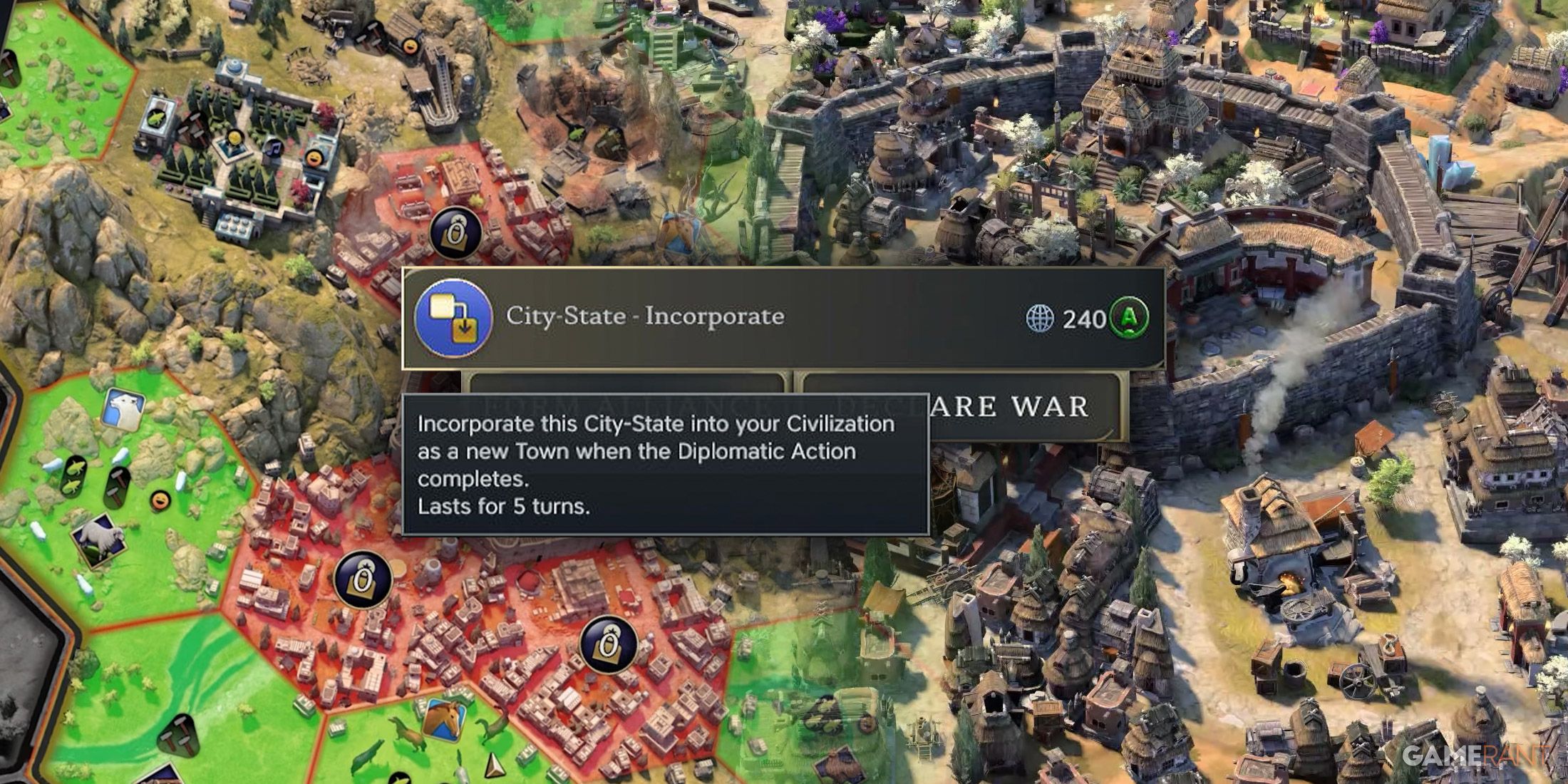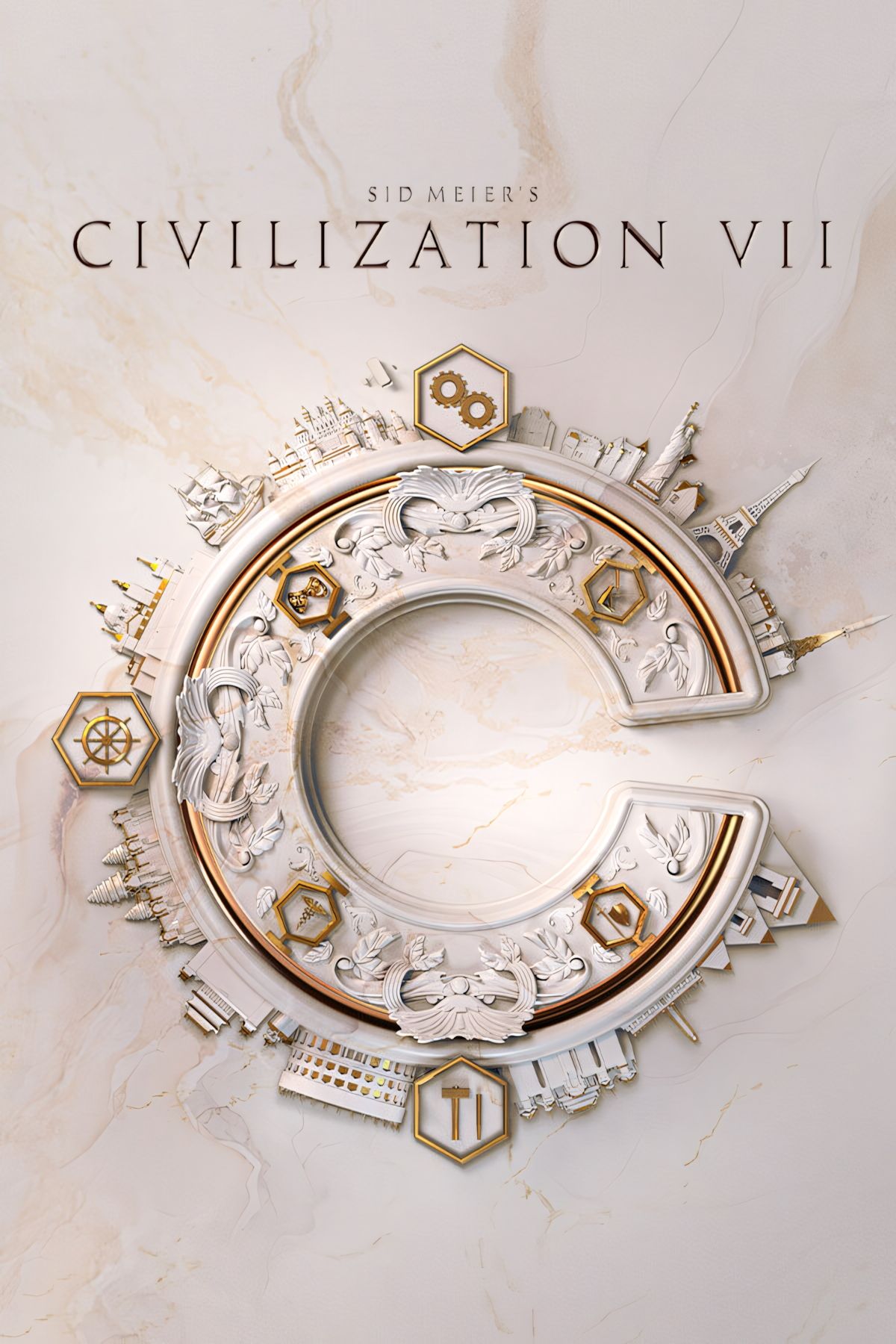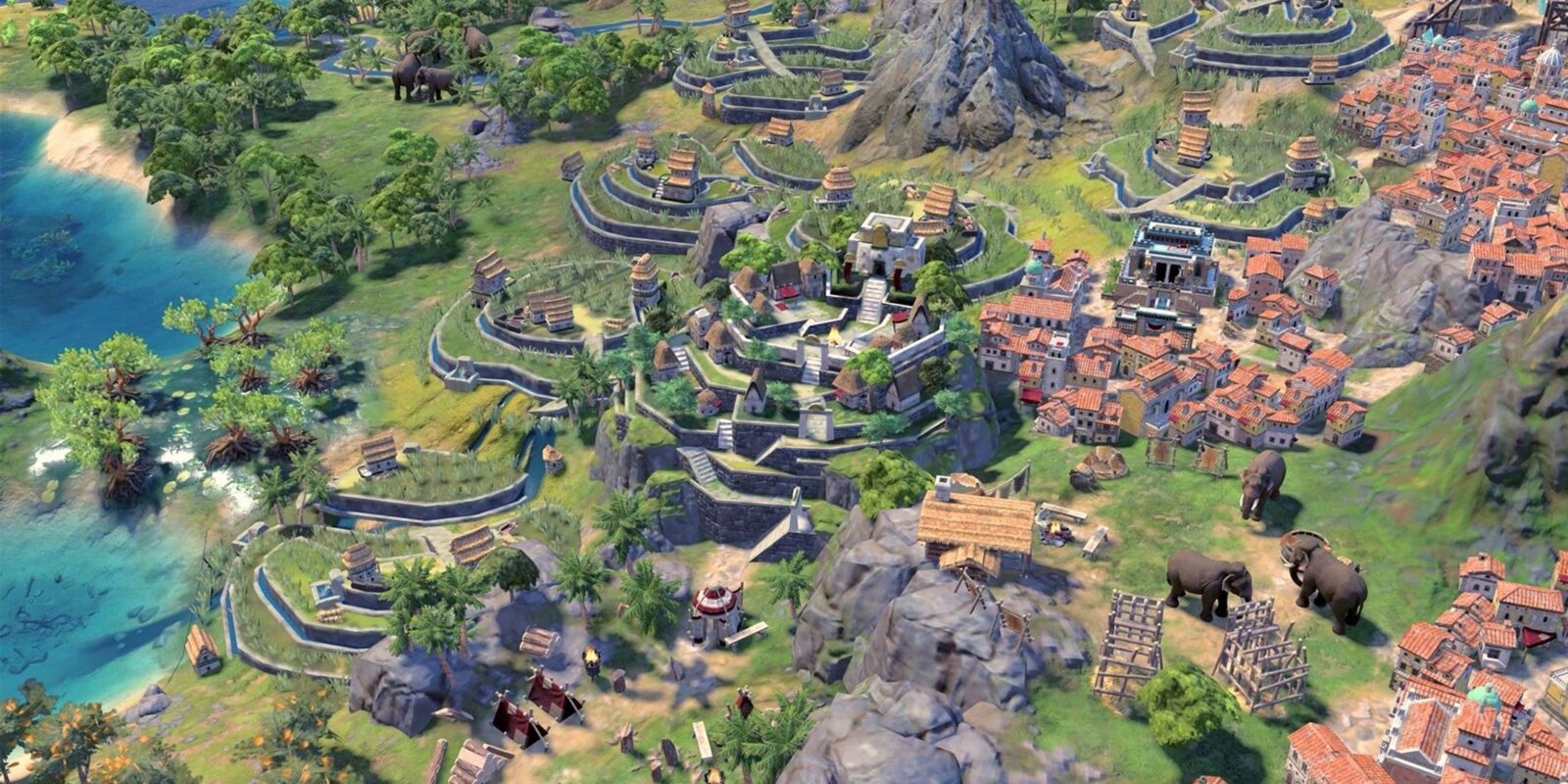Because Sid Meier’s Civilization is all about bringing players through history, each game has been broken down into multiple distinct eras. Each of these eras has been themed after a real-world era, like the Bronze Age or Space Age. With Sid Meier’s Civilization 7, Firaxis once again has done just that. However, this time around, there are only three ages for players to get through, and with the passing of each age, the entire game is shaken up immensely.
Sid Meier’s Civilization 7‘s ages not only progress civilizations through time, but they also feature their own distinct gameplay. Along with that, practically everything is given a clean slate. While that may be jarring for some franchise veterans, this change actually makes for a much stronger game overall. Now, no civilization is left behind with the passing of an age, and players face whole new exciting challenges as the world evolves, while condensing the entire experience.

Related
Why Civilization 7’s City-States Are a Cut Above the Rest
Sid Meier’s Civilization 7 once again features city-states, but this time around they have taken on an entirely new form for the better.
Civilization 7’s Ages Change the Experience for the Better
Civ Players Are No Longer Left Behind With the Passing of an Age
One of the best parts of Civ 7’s three new ages is that players are no longer left behind as the world progresses. In previous titles, civilizations could fall behind if they were not careful. While one civilization has tanks, the other could still be fighting their wars with spearmen. As the ages progressed, this divide could get even larger. That could often be great for the leading civilizations, but those that were left behind would tend not to have a great time.
In Civilization 7, with each age, players start off mostly fresh. They keep their cities, but much of the game is reset: there are brand-new civic and tech trees, units are upgraded or removed, and city-states are swapped out. Civilizations that were in the lead in the last age do get some buffs depending upon how far they got in a Legacy Path, but those that lagged behind are not penalized too much. Plus, since victory can only be obtained in the final age, everyone still has a fighting chance.
Each Civ 7 Age Features Its Own Distinct Gameplay
Along with that, each of Sid Meier’s Civilization 7‘s ages are far more than simple upgrades to the world and civilizations. Each age actually has its own distinct gameplay mechanic that players need to be prepared for, they have their own unique Legacy Paths, and players must take on a whole new civilization. While some ages are better than others, this makes for a fun, ever-changing experience.
Each game starts off in the Antiquity Age, which is when players are expanding their cities and attempting to claim as much of their starting continent as they can. In the Exploration Age, players must travel to distant new lands to unlock brand-new continents filled with civilizations to meet. They must colonize these lands and attempt to turn their civilization into a global superpower. In the Modern Age, they must set their sights on victory and use all sorts of modern technologies to finally devastate their enemies once and for all.
These three ages are a great change of pace from Civilization titles of the past. Not only is it nice to see everyone start off on a similar footing with each age, but the changes in gameplay and civilizations help to keep the experience fresh. Plus, the Legacy Points players earn and the crisis they must face at the end of each age help to make this experience even better.

Grand Strategy
Turn-Based Strategy
4X
- Released
-
February 11, 2025










Leave a Reply